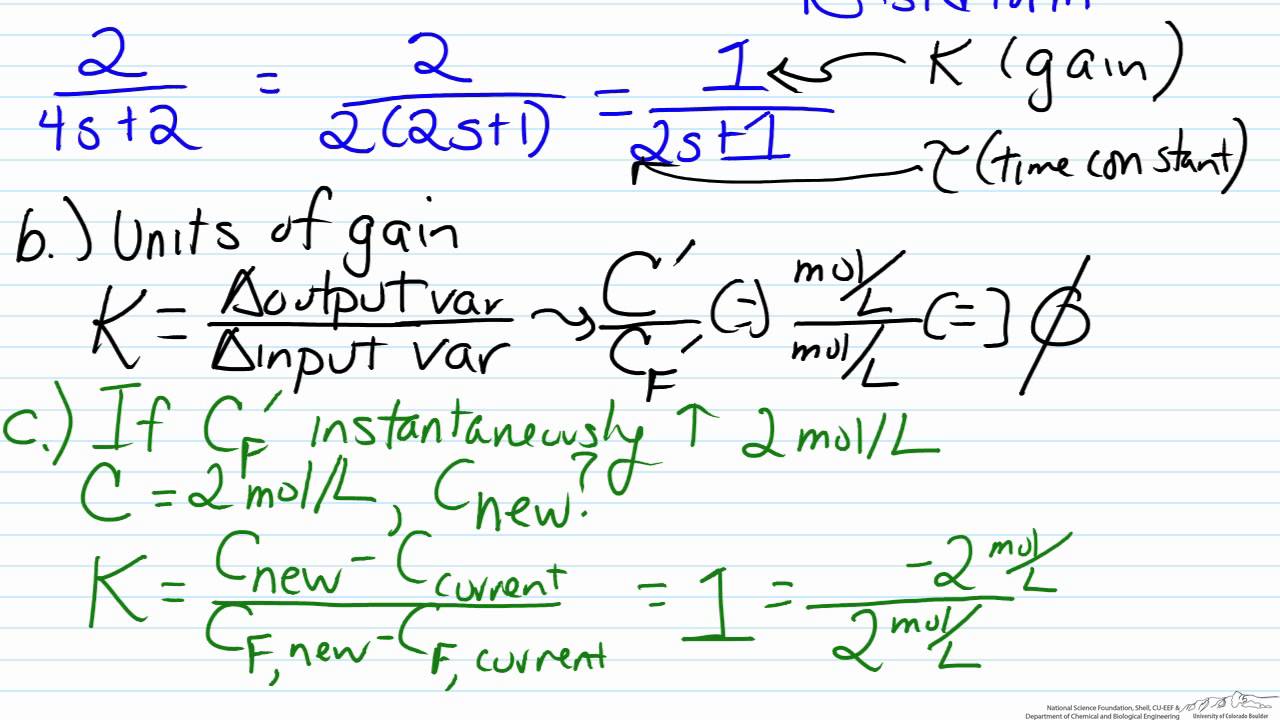LearnChemE
Determines the gain and the time constant for a stirred tank bioreactor that is represented by a first-order transfer function.
Made by faculty at Lafayette College and produced by the University of Colorado Boulder, Department of Chemical & Biological Engineering.
Check out our Process Control playlist: https://www.youtube.com/playlist?list=PL4xAk5aclnUhfXrHhv_ZQfbQ6w6ahwfFQ
Are you using a textbook? Check out our website for screencasts organized by popular textbooks: http://www.learncheme.com/screencasts/process-controls
Check out our website for interactive Process Control simulations: http://www.learncheme.com/simulations/process-control
Source




What does it mean when a transfer function ends up having multiple K values?
Fantastic, great explanation. Thank you
This was helpful. Thanks!
I am wondering if you can do this for a second order transfer function. For example, if you had simplified the denominator of the transfer function to s(s+2), can you say that the time constant for the system is 1?
t=5tau seems arbitrary. Why not 4tau, when e^-4 would be 0.018 and could be rounded to zero, or 6tau when e^-6 would be 0.0025 and could be rounded to zero? Is there some significant figures or orders of magnitude argument that is being made that allows you to decide that 5tau is okay to choose, or has it just been agreed upon that for this equation, yprime = KM(1-exp(-t/tau)), 5tau is sufficient to approximate steady state?
I guess its easy enough to just remember 5tau, just curious why that value was chosen. And thanks for the video.
Thank you for the help. Made my lab for Systems Dynamics a lot easier.
jesus this guy's voice is unbearable
in that last question where did you get 368 from?